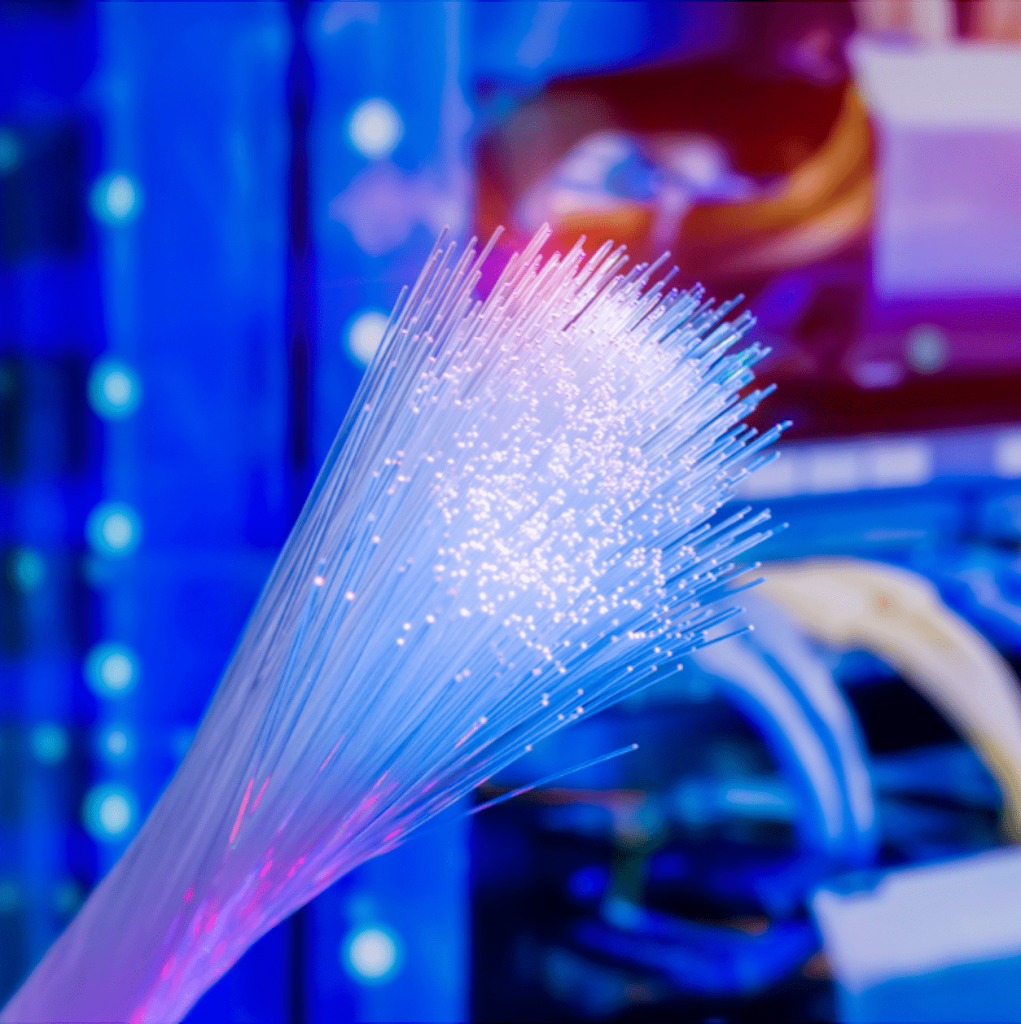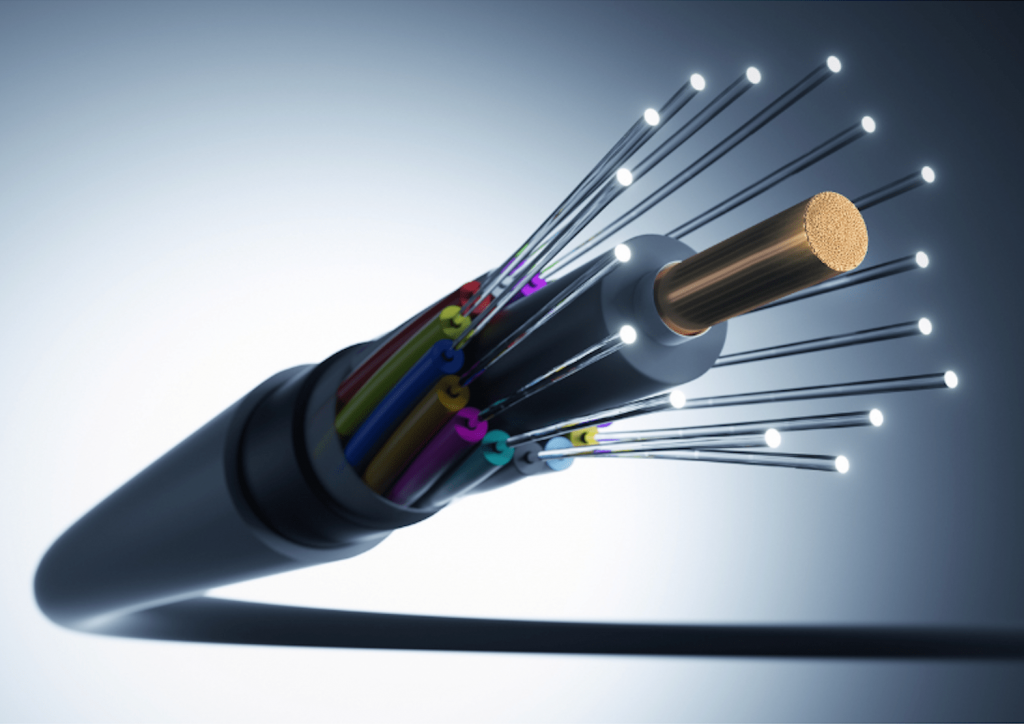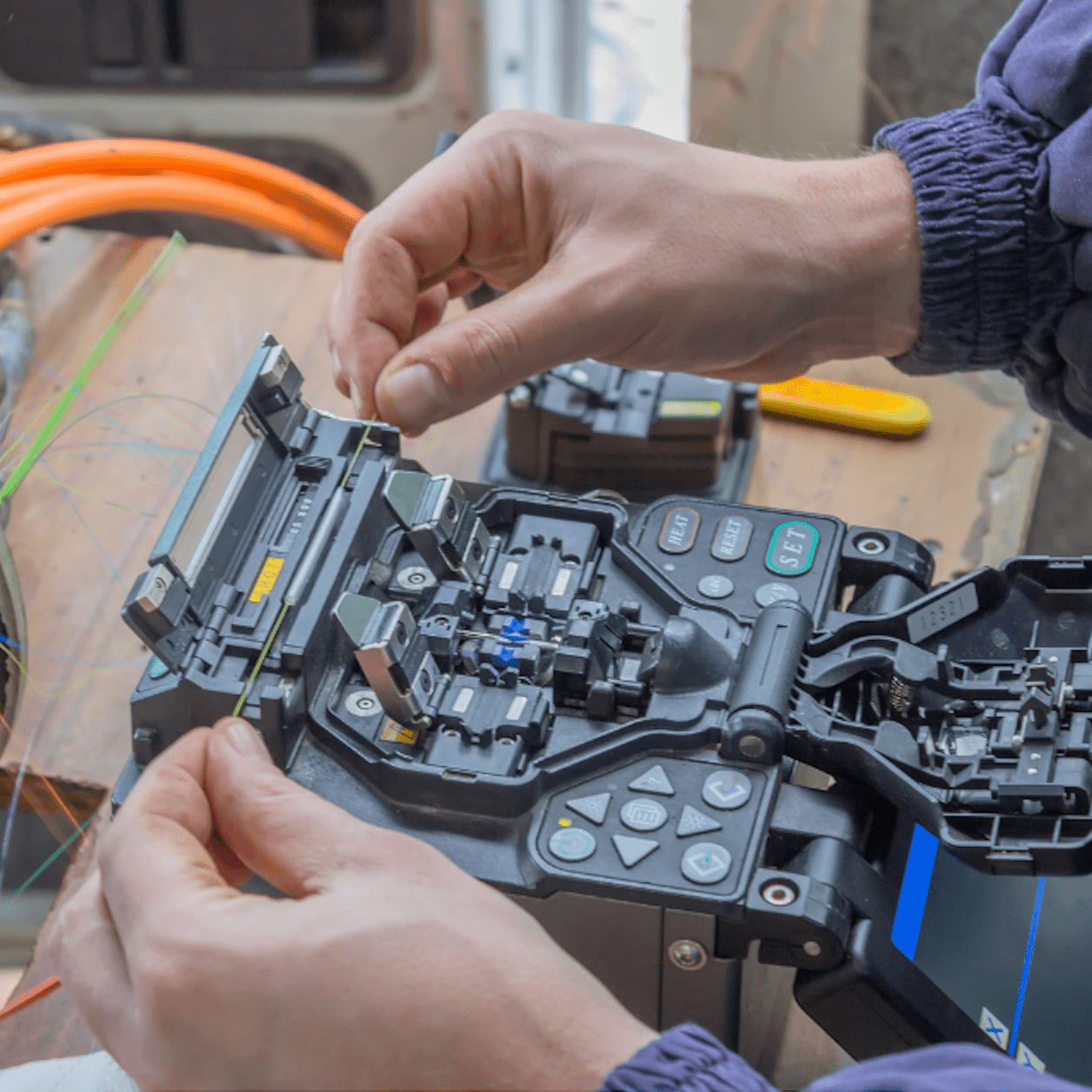February 13, 2024

Lately, everyone has been discussing fiber optics for their business, and it is easy to understand why. Fiber optic cables are some of the fastest and most reliable on the market. Is your business ready to make the switch?
In this article, we explain what fiber optics is, what research shows on projected growth, and the advantages for business, all to help you decide whether fiber optics is best for your business.
What is fiber optics, and how does it work?
Simply put, fiber optics involves transmitting information — such as telephone, television, or internet — through infrared light pulses along a thin fiber made of glass or plastic. Fiber optic cables can contain up to several hundred strands of fiber optics.
Fiber is becoming increasingly popular due to its incredible transmit speeds and much higher bandwidth capabilities than copper cables.

Fiber optics is more popular than ever
Over the next decade, industry experts predict that fiber optics will grow exponentially. There are many reasons for this expected growth. We have seen firsthand how businesses nationwide have increased bandwidth and faster data transmission requirements, increased need for securely storing and processing data, and higher demand for green technology.
And while fiber optics is just now beginning to make a name for itself in homes across the country, we are already seeing more businesses in various industries switching from copper to fiber.
Benefits of fiber optics for businesses
Many business owners are choosing to install fiber optic cables over copper cables due to their incredible advantages. Let’s review what makes fiber optics a good option for your business.
Higher bandwidth: If we’ve said it once, we’ve said it a dozen times. Fiber optics hold an almost incomprehensible capacity for moving enormous quantities of data without impacting overall speed. Fiber cables rated at 10 Gbps, 40 Gbps, and even 100 Gbps are industry standard, while copper cables top out at 10 Gbps.
Better transmission speed and distance: Copper uses electrons to move information, whereas fiber optics uses photons. Photons travel at the speed of light, while electrons move at less than 1% of the speed of light. With the current setup, light in optical fibers travels closer to 31% less than the speed of light. In other words, fiber optics is fast, much faster than copper.
Additionally, copper cables need signal boosters every 330 ft. (100 m.), something that fiber cables do not. In fact, fiber can transmit information up to 1,800 ft. (550 m.) for 10 Gbps for a multi-mode cable and nearly 25 miles (40 km.) for one single-mode cable.
More reliable: Fiber optic cables are stronger, thinner, and lighter than copper cables, which makes them less likely to get damaged, break, or shred. Many fiber optic cables are buried underground, protecting them from the elements and making them unlikely to lose connection in a storm. Moreover, optical fiber cabling requires less maintenance and fewer updates.

Increased security: Fiber optic cabling is ideal for businesses or industries where cyber security is critical. Because fiber uses light to transmit signals, it is immune to electromagnetic interference (EMI), protecting your data from jams and hack attempts.
Fiber cables are less susceptible to physical attacks like wiretapping because they are insulated by cladding (plastic or glass sheathing covering the fibers and glass core where the light pulses move). This cladding also further protects the fiber optic cables from heat and cold.
Better for the environment: Fiber optic cabling is the greener, more energy-efficient choice than copper. Because fiber uses light instead of electrical current to transmit signals, they do not emit significant amounts of carbon dioxide during transmission or produce electromagnetic fields.
As we mentioned above, fiber has nearly limitless bandwidth, which minimizes the need for frequent updates. When upgrades are needed, however, this can be done without replacing the cables, ensuring long-term viability and making fiber the more cost-effective option in the long run.
Making the right choice for your business
In conclusion, fiber optics is not only here to stay but is expected to become the most popular choice for businesses over the next decade. More companies are switching to fiber optics because of its high bandwidth, incredible speed, reliability, increased security, and minimal environmental impact.
If you are opening a new office building or warehouse this year and want to know if fiber optics is the right choice for your business, contact our team. We will discuss your project, ask about your business needs, and present the best options to meet your goals.
CTIS Cabling can install fiber optic cabling for your business anywhere in the United States. We fuse our own fiber cables, saving you more money on your installation project.

